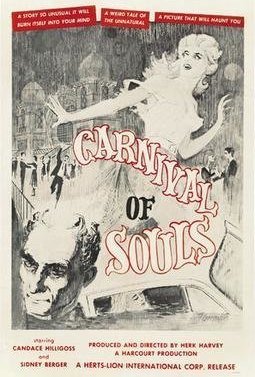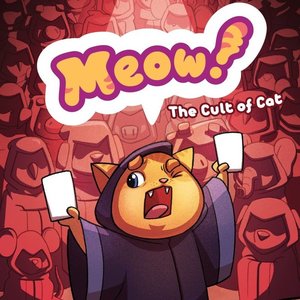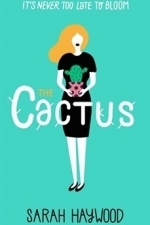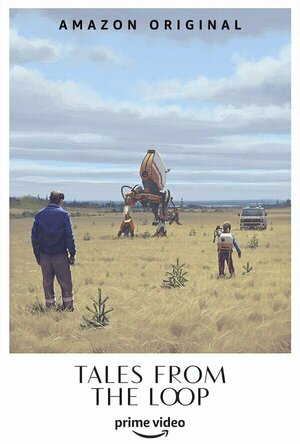Allison Anders recommended Carnival of Souls (1962) in Movies (curated)
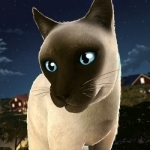
Running Cats - Survive The Free Kitty Cat Simulator
Games and Entertainment
App
This a game about love and cats! Little puppy cats and cute kitties are always fun to play with....
Lucy Buglass (45 KP) rated Jurassic World: Fallen Kingdom (2018) in Movies
Jun 20, 2019
Jurassic World: Fallen Kingdom is set three years after the destruction of the Jurassic World park, and characters are faced with the dilemma of what to do now a volcano on the island is beginning to erupt. It’s a huge moral dilemma: let the dinosaurs die again, or move them to a safe location where they can thrive. Ultimately, Claire and Owen end up back on Isla Nublar with the help of a rescue team to round up the dinosaurs. As you can expect, things don’t go according to plan and we soon realise the rescue team has other, darker intentions.
Whilst this film is not the strongest in the franchise, it’s still an enjoyable watch. I wasn’t expecting it to be as thought provoking as it was, which was a pleasant surprise. I felt like the storyline had a lot of depth to it, and a lot of emotional moments too. One thing I really love about the Jurassic franchise is how they make you connect and feel emotions towards CGI dinosaurs. You know they aren’t real, yet you get so invested in the narrative that you quickly forget. In Jurassic World: Fallen Kingdom we see some familiar dinosaurs from the previous films, as well as some new ones too. In classic Jurassic nature, we also see a brand new dinosaur that humans thought was a good idea to create… for some reason.
Another thing that surprised me was the horror-like elements that were present in the film. Without giving too much away, there’s a couple of scenes that are very reminiscent of classic horror and plummets the film into a much darker, creepier atmosphere. These scenes were incredibly well done and didn’t feel out of place, even though they could’ve easily felt too jarring. It was fun to witness the franchise experimenting with this, and enhances the scary side of the dinosaurs. There’s some really impressive shots during these scenes too, that emphasises the imposing nature of these creatures.
My biggest criticism of this film is that I felt like too much was going on, and consequently the narrative felt rushed. Despite it running at just over 2 hours, I almost felt like we needed another half hour to properly tell the story without glossing over some really important plot points. The main narrative was paced okay but then we had random side storylines that seemed unnecessary and just left me confused more than anything. It’s a shame they tried to cram so much into such a short space of time as there was no need to do that.
Long time fans of Jurassic Park should definitely give this a go as I think it’s a solid entry into the franchise, though it doesn’t do enough to ascend above its predecessors. It’s what I’ve described as a “fun, Monday night film” to people who’ve asked, so if you’re looking for a visually impressive blockbuster with loud roars and some creepy elements, this film is perfect for you.
https://lucygoestohollywood.com/2018/06/24/life-finds-a-way-jurassic-world-fallen-kingdom-review/

Essential Oils Reference Guide for Young Living
Health & Fitness
App
This Young Living Essential Oils Reference Guide is the new ultimate reference guide in the Young...
Purple Phoenix Games (2266 KP) rated Meow! The Cult of Cat in Tabletop Games
Jul 18, 2019
NOTE: I have never been hazed nor have I hazed another. Just wanted to get that straight.
DISCLAIMER: We were provided a review copy of this game for the purposes of this review. These are preview copy components, and I do not know if the final components will be similar or different, or if the Kickstarter campaign will alter or add anything through stretch goals. -T
As an initiate to the Cult of Cat it is your duty to pass the test and not break any rules. The winning player, therefore, is the one who can perform all of the necessary rules without breaking any. Let me explain. The game is a giant stack of cards. Upon these cards is the name of the rule, an illustration that matches the rule, and an explanation of the action to be completed. At the beginning of the game you are dealt two cards (or one card dependent on number of players in the game) and one card is dealt face-down to the middle of the table. You look at your dealt cards, study them, and pass your hand to the player on your left. So you now have seen two rules that you have passed, and you have received two rules from your neighbor on the right. I hope you remembered what you passed…
On your turn you will play a card from your hand, announce and perform its action, and then perform all the actions on your opponents’ cards that you can possibly remember to impress the brethren and hopefully not break any of their rules in the process. Once you are satisfied with your performance you point to the player on your left and ask, “Have I broken any of your rules?” If you performed one of the rules in their hand incorrectly, or omitted one of their rules, then they are required to say, “Yes.” At this point they announce the rule you have broken, add that card to the card that was dealt face-down to the table, and you add your played card to form a pile of three. Shuffle those and draw one for yourself, your opponent draws one, and the remainder stays on the table. This is the game and it continues until someone has correctly performed the actions of their opponents and not broken any rules.
Components. Again, this is a giant stack of cards. I do not know what the quality will be after the Kickstarter campaign ends, so I cannot really comment on them. My review copy cards were fine. The art on the cards is really comical and funny. I mean comical like in comic books. I like the art quite a bit, and while I am not really looking at the illustrations as I play (there is already so much I am trying to remember), when I look through the deck I chuckle at a lot of the cards.
Guys, this is a great party game. It is rules-light, doesn’t require a ton of strategy, and gets people up and moving and out of their comfort zones. It really is perfect for those times when you have reluctant players or partners to get them into the gaming mood by having them perform ridiculous but super fun actions. Winners, losers, it doesn’t matter at the end of this game. Everyone is sure to have a really great time playing. If you love Happy Salmon, I can almost guarantee that you will also love Meow! as something a little different. And we at Purple Phoenix Games love Happy Salmon! I am really looking forward to the Kickstarter campaign to see what Peter C. Hayward has up his sleeves.

Closet Love – virtual closet
Lifestyle and Utilities
App
Digitally manage your clothes along with outfit collage creation like polyvore, looks planner, style...
Connie (244 KP) rated Drops: Learn 23 new languages in Apps
May 31, 2018 (Updated May 31, 2018)
If you choose the free version of the app, you are limited to five minutes per session (unless you share on social media, which nets you another five minutes each time you share). Personally, I went with the lifetime paid membership, which unlocked several learning paths (changing the content you learn slightly with each path) and allowing me both unlimited sessions and the opportunity to set reminders for myself to complete my time. I'd advise this if you feel you will utilize this app to learn from.
I love the graphics. They make remembering the words easy for me, and the variety of activities keeps me engaged. I really love the ability to go back in and strengthen terms you aren't as familiar with--It allows me to focus on areas where I am struggling and seems to update daily. It does mix words from varying categories, though, which can be difficult if you're not aware that it's happening. I thought I was using a specific category only, so to move from food to family members was a bit jarring. Even so, I'm pretty happy with this app and I think it's a solid choice for everyone looking to learn a new language.
The only things I wish they would incorporate are an ability to compete with friends and a verbal component that checks your pronunciation, like Duolingo has.

Outcast Girl vs Pretty Boy (Forever Love #4)
Book
A protective boyfriend. A girlfriend who wants to fit in. Can love give them the strength to face...
Young Adult Contemporary Romance Family Saga
ClareR (5996 KP) rated The Cactus in Books
Jan 27, 2018
There is no rush to this story, but plenty happens. There's LOADS of character building: we get a really good insight into Susan and how she ticks. I found myself really plugging for her and wanting her to find her happy ending. The characters who populate her world are also really likeable, even her rogue of a brother (who she has the measure of right from the beginning). I'd love to know what happens next - I'm not a huge fan of sequels, but if someone (the author, perhaps!) could just satisfy my curiosity, that would be great!
My thanks to Netgalley and the publisher for the opportunity to read such a great book!
Kirk Bage (1775 KP) rated Tales from the Loop in TV
Jan 22, 2021
Everything about the production and presentation of Amazon’s Tales From the Loop suggests they thought it might be a bigger hit, or at least they had enough faith in it to let it be different from the mass appeal conventions that apply to sci-fi shows. They have proved this many times in recent years, with shows like The Man In the High Castle and The Expanse favouring patient and mature story-telling over interminable flashbangs and whizzpops usually found in the more action based sci-fi on Netflix and others (The Handmaid’s Tale being another notable exception).
Having raised myself auto-didactically on the oldest traditions of science fiction writing in novel and short story form since my teenage years, I can say with some amateur authority that the point of using sci-fi ideas was always about the people and the parallels to social reality and politics that could be highlighted by putting them in a “what-if” situation. The lazer guns and spaceships and evil aliens were much more a product of Hollywood, and still are. Great science fiction writing can and usually does revolve around a very simple change to the world we know, an inversion or a convention or a technology that turns how we live on its head. At its best it is philosophical and moral poetry.
Tales From the Loop, inspired by the beguiling paintings of Swedish Artist Simon Stålenhag aspires to return to these principles, eschewing breakneck pace and unnecessary exposition at every turn – it is entirely content to confuse and sometimes even bore you with its patient, melancholy approach, testing almost if you are worthy to reach the prize of deeper meaning buried away in the final few episodes.
The idea of Stålenhag’s work is to juxtapose a familiar and mundane landscape with a detail of technology that does not exist in our reality. Often it is something broken, run-down or neglected, leaving a strange sadness and beauty behind that has you wondering who once made this and what was it for, and why is it no longer loved? The untold stories objects and hidden lives, secrets and desires that have been lost, is what this sensitive and delicate show is about. It is about the interconnection of lives caught in time, and the sci-fi / tech conceit is only the hanger that coat is put on. Which… I love.
The surface idea is that we are looking at the inhabitants of a small American town that once relied on farming and community, but now has been changed by the presence of an underground facility that deals with experimental physics and finding ways to make impossible things possible. They call it The Loop. It is never fully explained where it came from, or why, or what it is truly capable of – the mystery is always allowed to remain mostly a mystery – which, again, I love!
Many people in the town work at The Loop and rely on it for their livelihoods and collective economy, including Jonathon Pryce and Rebecca Hall, who are ostensibly the show’s main characters. But most folk have no idea what is really going on. Each episode focuses on one or two members of the community that interweave with one another; several important people begin as background dressing and become more prevalent as the full story of their lives and connections unfolds. But no one character is in every episode… which, you know, I love.
Their lives, that seem simple at first glance, are revealed to be complex tapestries of emotion and personal history, revolving around how The Loop has affected them and the things they love. The progression and unfolding of the detail is so deliberate and usually under-explained that very often you don’t realise the effect the full image will have. And when it does catch up with you it becomes a very moving and meaningful experience. Characters that you don’t understand or even like at first come into sharper focus as we reach the climax of the season and grow to learn why they are the way they are. The story arcs of Pryce and Hall in particular are very satisfying, tragic yet utterly beautiful to comprehend.
A lot of the criticism you will see about the show will concentrate on how slow it all is. I am totally convinced this is a deliberate artistic choice to weed out the thrill junkies. They are very welcome to go elsewhere, and it sounds as if many of them did, basing their reviews on one or two half watched episodes they couldn’t be bothered to engage with or wonder at. Which is why I think in time the respect for this as a work of art will come back around.
There is nothing to fault in the production at all. From the opening credits to the end of each episode, what you get is a very highly polished and considered look and feel, designed to evoke certain feelings over others – a wistfulness, an ennui, a bittersweet smile of knowing, perhaps. It invites you to watch patiently and relate, not to watch eagerly and expect… which, you know, I love.
The photography is crisp and well framed always; the music is subtle but effective; the dialogue is often sparing and well chosen (no detail is merely thrown away); and the direction is of a remarkably uniform vision, considering each episode is a different guest professional, including such prestigious names as Jodie Foster, Mark Romanek and Andrew Stanton.
I absolutely urge anyone that isn’t put off by a little sentiment to give this one a try. Sadness and regret in life is not something to shun and be afraid of, they are parts of human experience, and I love art that explores them as concepts. Put that art in a science fiction context and I am bound to love it even more. Like the final moments of Blade Runner, we know that one day all these moments will be lost in time, like tears in rain. We have to take time to see the beauty while we can, even if that beauty is painful.
It may not be for you – I don’t think it is better or worse than other things, just more… me. There is every chance that if it isn’t you… you will hate it. If you do begin, however, please see it to the finish before casting judgement – the final episode directed by Jodie Foster is truly wonderful: a pay-off of such emotion after your investment of seven previous stories, tying it all together perfectly. Rarely have I felt so stupid for not understanding the point of something sooner, or been more pleased that I hadn’t. The final moment of the season is literally unforgettable, and gets richer in my imagination by the day.
Will there be a second season? There certainly could be. Was it enough of a success to justify the investment? Hmm, not sure. Either way, it either sits as a perfect self contained collection of fine, old-fashioned sci-fi stories, or I’d be happy to see it expand, as long as the temptation isn’t to listen to the negative reviews and pander to the fast-food mentality that has already rejected it without fully understanding it. Because nothing needs to change here. A thing of beauty, recommended to those who like beautiful and delicate things.
